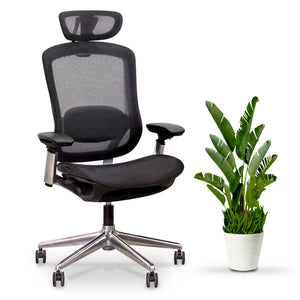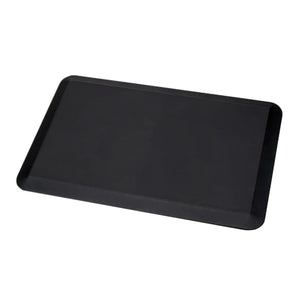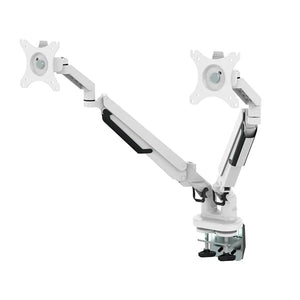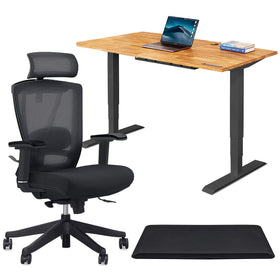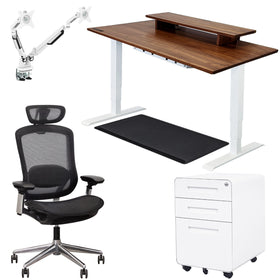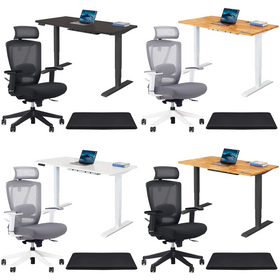
How to Treat and Prevent Chronic Stiff Neck: Nursing and Rehabilitation
Neck strain and stiffness is incredibly bad for the body as it puts unnecessary pressure on the neck and shoulders which travels to the rest of the body. The constant pressure that occurs daily begins to affect you at night too, infiltrating your sleep and disrupting the natural sleep cycle with pain and discomfort.
10 years ago, more than 17 percent of women and more than 12 percent of men suffered from migraines and pain in the neck, lower back, face . These numbers are on the rise due to new advances in technology which correlates to more time on computers, phones, and tablets. It is now more common for someone to be looking down and be at a bad and awkward neck angle than it is being in a natural shape. These angles put strain on your neck ligaments, muscles and soft tissues causing damage to the body creating long term health issues. The neck is a major pillar of your body and because of neck issues it may cause the following:
- Jaw problems
- Stress
- Poor Posture
- Spinal Injury
- Osteoarthritis
Ways to Help Relieve Neck Stiffness and Pain and Start Rehabilitating
Reducing Stiff Neck
Reducing neck strain takes changing of some minor lifestyle habits but a little change goes a long way. Reducing pain and starting rehabilitation means breaking some bad habits like poor posture and increasing exercises that strengthen the upper body muscles to prevent them from injury and less likely to be strained in the future. Another great way is changing your workplace habits and using ergonomic tools such as standing desks, monitor arms, or ergonomic chairs.
If you are finding your neck is throbbing or swelling due to stiff neck pain, reduce the pain by applying hear or ice with alternating breaks for about 20 minutes to help relieve neck inflammation. Taking a hot bath or shower can also help relax the muscles in the neck and rest of the body. If you have health coverage, take advantage of massages and the use of healthcare professionals to help you be the best you.
Implementing Ergonomics in the Workplace
9/10 people work in front of computers for 6-8 hours a day only to go home and look at another computer screen or their phones. This can be a major cause of neck pain as the use of dual monitors coupled with poor monitor placement has increased exponentially over the years. Key changes to implement in the workplace would be:
- Ensuring the chair is adjusted properly in a comfortable natural position with an emphasis on lower back support
- Ensure your feet are flat on the ground with knees at a 90 degree angle, even with your hips
- Eye level should meet the middle of the monitors avoiding too much neck movement
- Setting up your keyboard and mouse to be ergonomically placed within reach of each other, elbows at 90 degrees
- Stretch!!! Take breaks and move around at least once an hour to get blood moving throughout your system
Implementing Ergonomics in Everyday Life
Limit Handheld Electronic Devices
Nowadays, it’s hard to keep off our phones, during the morning commute, taking a break from work, scrolling through the days feed while warming up on the couch. But keeping a few tips in your mind while on your phone will save you and your neck a lot of pain in the future:
- Hold your phone higher, ideally at eye level
- Hold your phone to your ear when making calls instead of bending your neck
- Better yet, use earphones when making calls
- Don’t be on your phone for more than an hour straight
- Stretch and loosen your neck after using your phone
Limit Driving for Long Periods of Time
It all goes back to sitting all day. For those who have no choice and have long driving commutes or for those whose job it is to drive all day, shortening this can be a challenge but what you do with the time you are not driving can help counteract the negative effects and put you on the right path.
- If you can’t help but drive for a long time, make sure to stretch throughout the day and stand as much as possible when you can
- Set an alarm to remind yourself to check your posture
- Calibrate your wheel, head rest, and seat so you are sitting at the most ergonomic position
- Ensure you have proper lumbar support in your seat
- Do NOT Text and Drive
Be Mindful of Your Sleeping Position
The average person moves through many sleeping positions throughout the night as a way for the body to relax and get into the comfiest position possible. The one sleeping position that should be avoided at all costs is sleeping on your stomach. It not only limits breathing but it puts the head and neck in an unnatural angle to the body causing more harm to the sensitive muscles in the area.
Stretch, Stretch, Stretch
If there is one thing that you do to negate side effects of neck stiffness and pain, it would be to stretch. Stretching is the best thing you can do to help rehabilitate and strengthen and prevent straining.
Try out a few of these stretches:
-Roll your shoulders front and back, up and down, and in full circles
-Rotate your head left and right and in full circles
-Lower your shoulder and squeeze your shoulder blades together
-Slowly move your ear to your shoulder and repeat on the other side
-For more stretches, please see our other blog!













